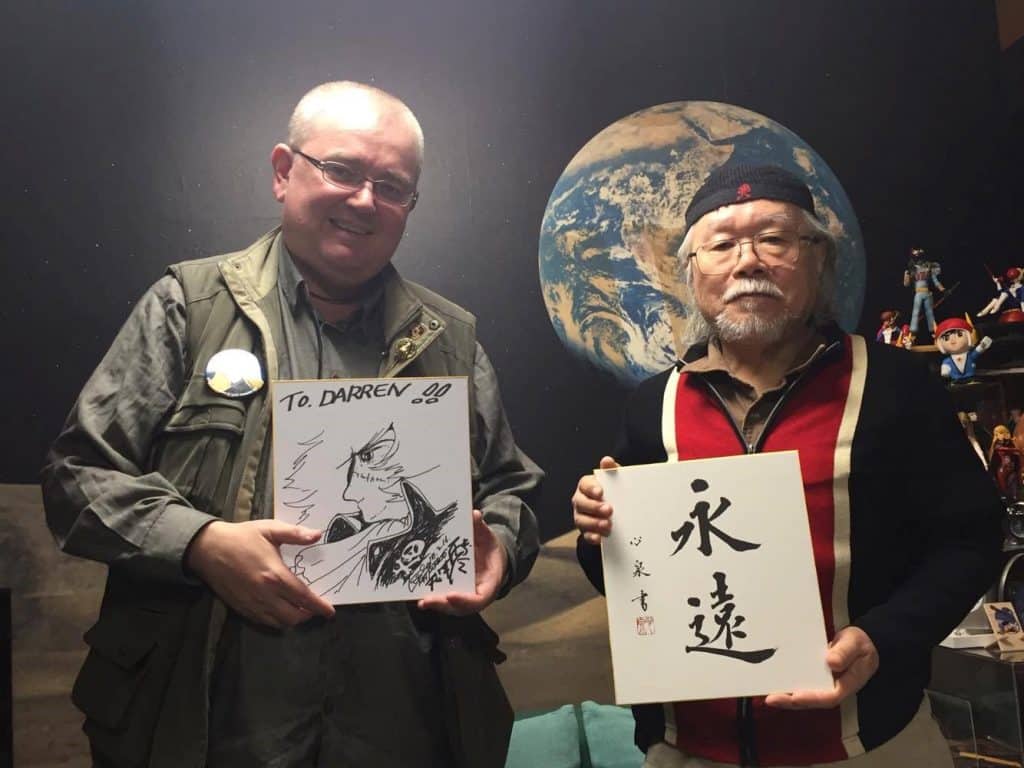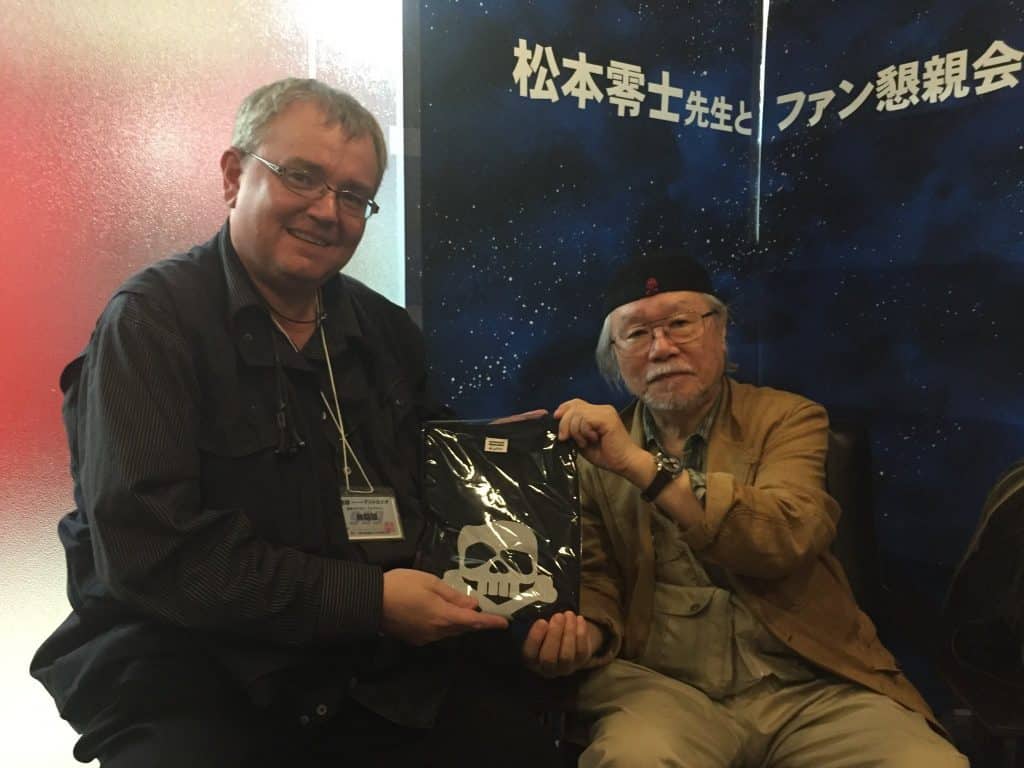Dr. Darren Ashmore is the co-editor of Leiji Matsumoto: Essays on the Manga and Anime Legend, the first book written in English about the celebrated artist.

Leiji Matsumoto, known for his defining space opera works like Space Battleship Yamato and Galaxy Express 999, which in turn, inspired iconic contemporary anime like Gundam and Neon Genesis Evangelion, has passed away on February 13, 2023.
iCLA Interdisciplinary Arts professor Dr. Darren Ashmore has been a long-time fan, scholar, and personal acquaintance of Leiji Matsumoto. With co-editor Helen McCarthy in 2021, Dr. Ashmore released the first book written in English on the sci-fi manga and anime legend. Ashmore and McCarthy’s book delves into the universe of Matsumoto’s works, the historical and cultural impacts that have shaped them, and how they have consequently shaped the anime and manga sphere. The compilation of scholarly essays explores topics such as Matsumoto’s life history, the space opera genre, the themes of his works, cosplay, and translation. The book also features Dr. Darren Ashmore’s interview with Matsumoto himself.
In an “Anime Tourism” workshop organized collaboratively by Tokyo’s Nerima Ward and JTB Kanto in 2017, iCLA students also had the memorable experience of meeting Leiji Matsumoto and animation director, Kazushige Yusa. iCLA students visited the workshop venue close to Nerima Station accompanied by Dr. Darren Ashmore. Students tried their hand at animation using Leiji Matsumoto’s famous characters Maetel of Galaxy Express 999 and Captain Harlock of Space Pirate Captain Harlock, followed by a lecture and panel discussion with Leiji Matsumoto.
Dr. Ashmore’s passion for Matsumoto’s works is clear with just one peek into his office. Leiji Matsumoto’s artwork from Space Pirate Captain Harlock and intricate models of space battleships Yamato and Yukikaze of Space Battleship Yamato adorn the walls and shelves of Dr. Ashmore’s office.

Dr. Darren Ashmore’s tribute to Leiji Matsumoto:
The recent death of Matsumoto Leiji, at the age of 85 marks the end of a career which, both as a solo creator and in collaboration with his spouse Maki Miyako, spanned a full seventy years.
Born as Matsumoto Akira, he was a youth who had watched his own father, Tsuyoshi face down the horrors of war with dedication and integrity, especially with regard to the fact that the elder Matsumoto was both a squadron leader and fighter instructor who knew that many of his own ‘boys’ would be sent to burning deaths. Perhaps this is why, though offered positions in commercial and military flight programs after the war, Tsuyoshi’s principles could not allow him to further profit from something which had brought so much harm. The Father’s philosophies became part of the personal ethos of the son and Akira went out into the world as a young man determined to find a place in which the terrors of conflict might find the explanation, resolution and peace which his Father could not.
It was in Tokyo, working with creative luminaries like Tezuka Osamu, Yokoyama Mitsuteru, Chiba Tetsuya and his partner to be, Maki Miyako that the determined Akira spread his creative wings. Working on romantic comics initially for the girl’s market he attained the pen name ‘Leiji’ (零士) – the warrior who works to midnight – to mark the passion which he brought to his labours. When interviewing him for our book, on his philosophy he admitted that the atmosphere in which he lived when young was the reason behind much of his success: in such close proximity to some of the first generation of Japan’s mangaka that this new comic warrior rose to every challenge. Whether it was subverting a girl’s adventure story (Marie of the Silver Valley) into his first operatic adventure, or recreating his own life as a pin sharp parody (Otoko Oidon) there was always something driving him forward.
Today, he is often credited with popularizing the genre of space opera in Japan and the Master has long been known for his grand dramas like ‘Galaxy Express 999’, ‘Space Pirate Captain Harlock’ and for the work he did on the ‘Space battleship Yamato’ series/comics. However, in his move into the age of adventure, he never quite abandoned his roots in comics for everyone. Not a ‘shoujo’ neither a ‘shonen’ creator, he strove to site both his grandest and his most modest works in that spark of integrity which burned in him all his life: to live free and to inspire others to recognize that their own freedom was, likewise important.
It should be remembered though that Matsumoto’s distinctive style of art, with its elongated characters and intricate designs, has become an iconic part of Japanese pop culture which has filtered down into every level of anime/manga. His influence can be seen in the work of many contemporary anime artists, who have adopted and adapted his style in their own works.
Through his work, Matsumoto-sensei explored themes of courage, loyalty, and the indomitable human spirit in the face of adversity. He showed us the beauty of the cosmos and the wonders of the universe, while also reminding us of the fragility of life and the importance of cherishing our loved ones.
We can only mourn the loss of one of the greatest creators in the world of anime and manga, doubly so as his name sometimes is not connected with the influence he had on the culture world. With heavy hearts, we bid farewell to our old master and pledge to continue down the track which he laid into the sea of stars, as he travels whither we, as yet cannot.
Rest in peace, Matsumoto Leiji, and thank you for everything. You will be deeply missed but never forgotten.
Dr. Darren Ashmore


